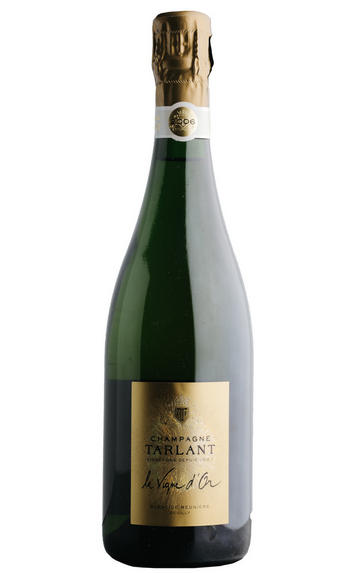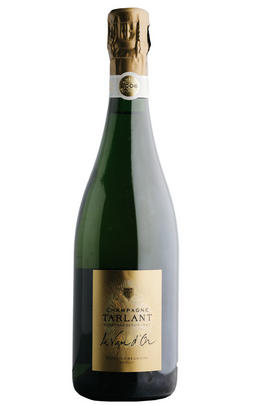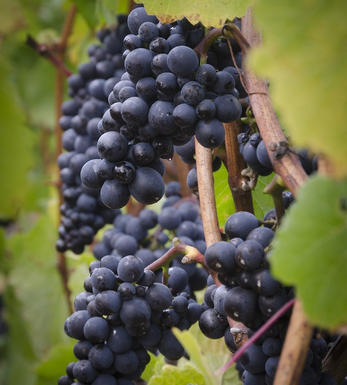
2006 Champagne Tarlant, La Vigne d'Or, Blanc de Meuniers, Brut Nature

Critics reviews
Attractive nose of brioche, roasted chestnuts, baked pears, cloves, gingerbread and salted caramel. It’s medium-bodied, bright and flavorful, with zesty and spicy elements throughout. Soft bubbles. Soft and caressing finish. Pinot meunier. Disgorged June 2022. Drink now.
James Suckling, JamesSuckling.com (August 2023)
About this WINE

Champagne Tarlant
Located in the Marne Valley of Champagne, the Tarlagne family’s involvement in winemaking dates back to the early 18th century, making them one of the oldest families in the Champagne region. The estate was officially founded in 1687 and has been passed down through generations, with each generation contributing to the family’s winemaking legacy.
The winery is situated in the village of Œuilly in the Vallée de la Marne, part of the broader Champagne appellation. The Marne Valley is known for its diverse terroirs and is particularly suitable for cultivating Pinot Noir and Pinot Meunier grapes.
Champagne Tarlant is known for its commitment to traditional winemaking methods and sustainability. They emphasise minimal intervention in the vineyard and the cellar, using organic and biodynamic practices to cultivate their grapes. The estate focuses on expressing the unique terroirs of their vineyards in their Champagnes.
The family owns and manages vineyards across various terroirs within the Champagne appellation. They primarily grow the traditional Champagne grape varieties, including Pinot Noir, Pinot Meunier, and Chardonnay. Production includes a wide range of cuvées, including non-vintage (NV) Champagnes, vintage Champagnes, and special cuvées.

Brut Champagne
Brut denotes a dry style of Champagne (less than 15 grams per litre). Most Champagne is non-vintage, produced from a blend from different years. The non-vintage blend is always based predominately on wines made from the current harvest, enriched with aged wines (their proportion and age varies by brand) from earlier harvests, which impart an additional level of complexity to the end wine. Champagnes from a single vintage are labelled with the year reference and with the description Millésimé.
Non-vintage Champagnes can improve with short-term ageing (typically two to three years), while vintages can develop over much longer periods (five to 30 years). The most exquisite and often top-priced expression of a house’s style is referred to as Prestige Cuvée. Famous examples include Louis Roederer's Cristal, Moët & Chandon's Dom Pérignon, and Pol Roger's Cuvée Sir Winston Churchill.
Recommended Producers : Krug, Billecart Salmon, Pol Roger, Bollinger, Salon, Gosset, Pierre Péters, Ruinart

Pinot Meunier
Pinot Meunier is a black grape variety used primarily in the Champagne region of France. It is one of the three primary grape varieties used in Champagne production, alongside Chardonnay and Pinot Noir. Its exact origins are debatable, but it is believed to have originated in Champagne as a mutation of the Pinot Noir variety.
The name “Meunier” is derived from the French word for “miller,” as the underside of the grape leaves has a powdery, white appearance reminiscent of flour on a miller’s hands. The grapes are small and blue-black in colour, similar in appearance to Pinot Noir grapes.
Pinot Meunier is known for its adaptability and ability to grow well in cooler climates. It buds and ripens earlier than Pinot Noir, making it less susceptible to late spring frost damage. This characteristic is particularly valuable in Champagne, where the climate can be challenging.
The wines tend to be fruity, with flavours of red berries, cherries, and sometimes a hint of spice. They are often softer and more approachable than the more structured Pinot Noir in their youth.
While Pinot Meunier is most closely associated with Champagne, it is also grown in other wine regions, including parts of Germany, United States (mainly California), and New Zealand. In these regions, it is used to produce still and sparkling wines.


Buying options
Add to wishlist
Description
This is one of the region best known, and most averred 100% Pinot Meuniers. Grown on steep slopes of Oeuilly above the Marne river which over time has revealed the complex clay and limestone soils. The vineyard itself, is the organic North East facing, Pierre de Bellevue lieu-dits planted by the Tarlant family in 1947.
Soft pressing, wild fermentation and 7 months in Burgundian barrique, no malolactic to hold tension. This is a unique Champagne, vinous and rich yet poised with crystalline energy. Earthy minerality layered with waxy fruits, wild flowers and golden apple charm. Complex and very long.
Disgorged June 2022, 0 dosage and only 1300 bottles made.
Drink 2023 - 2030+
Davy Zyw, Senior Buyer, Berry Bros. & Rudd (September 2023)
wine at a glance
Delivery and quality guarantee